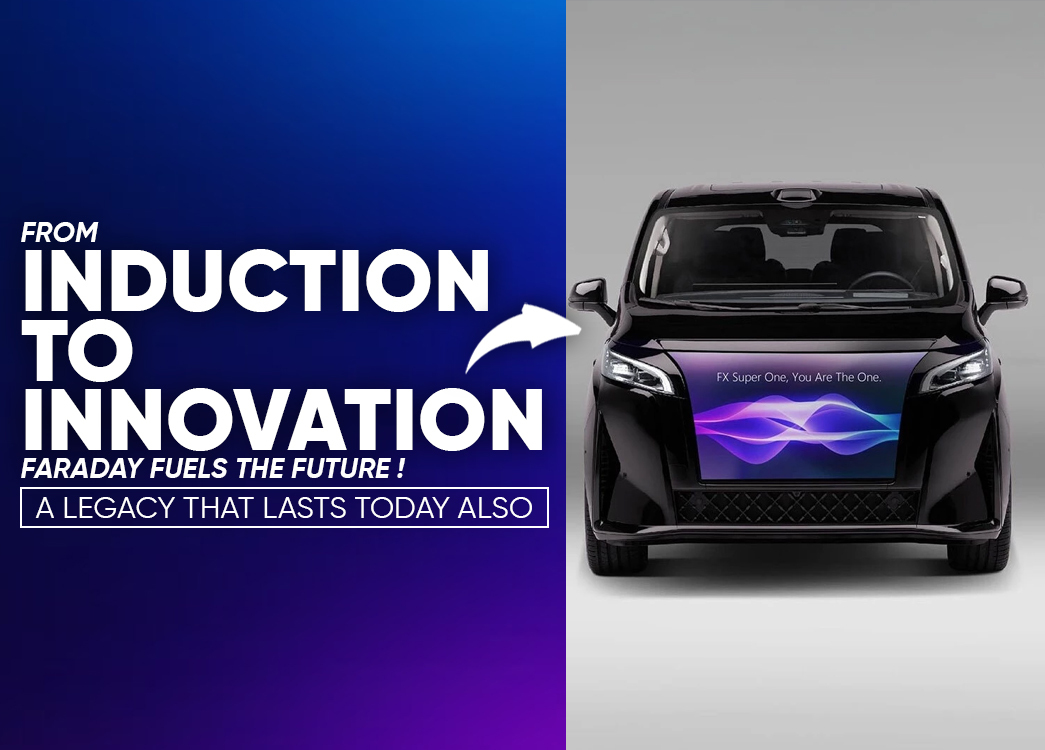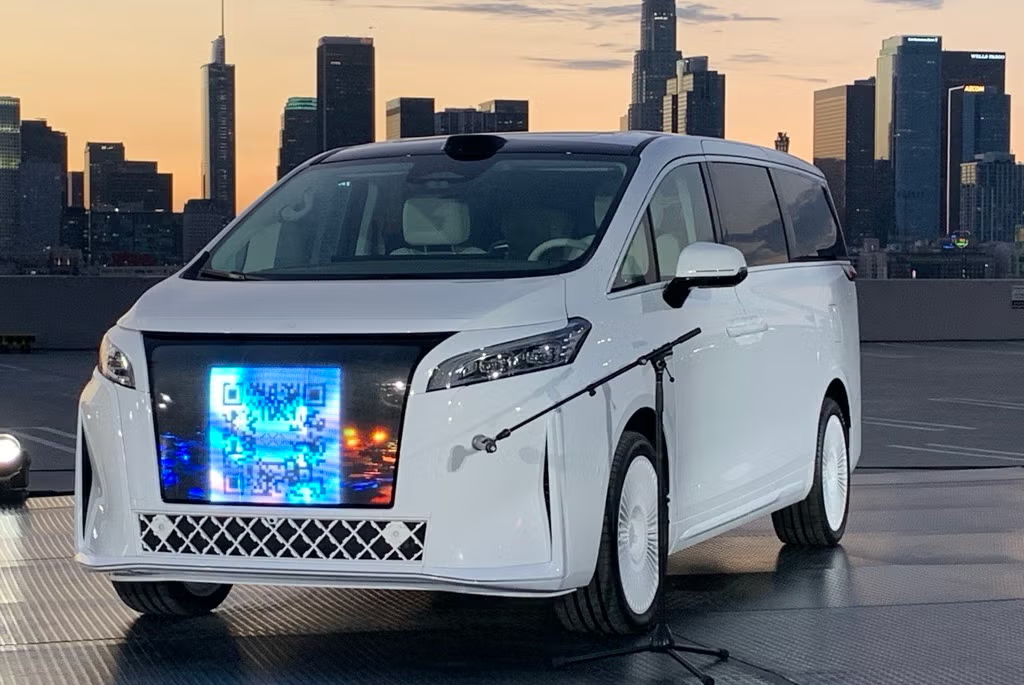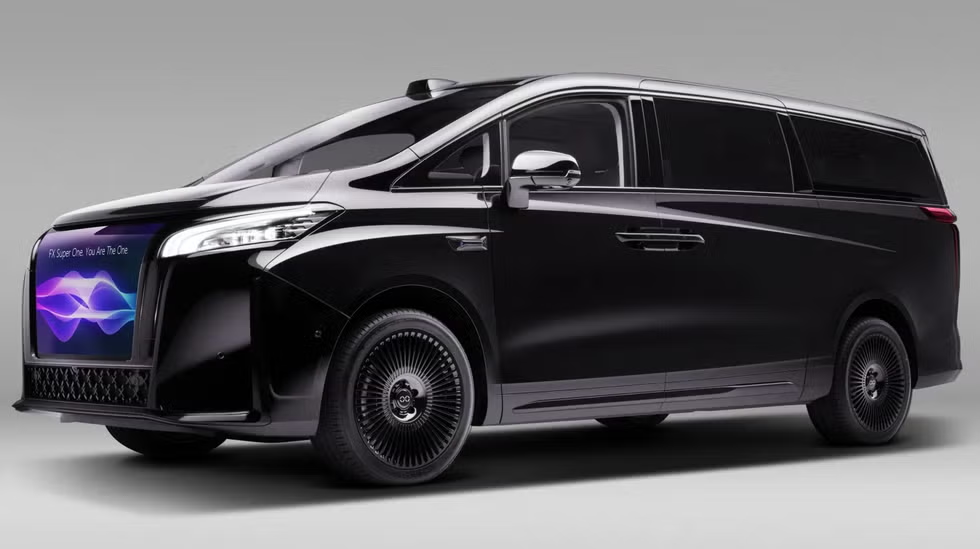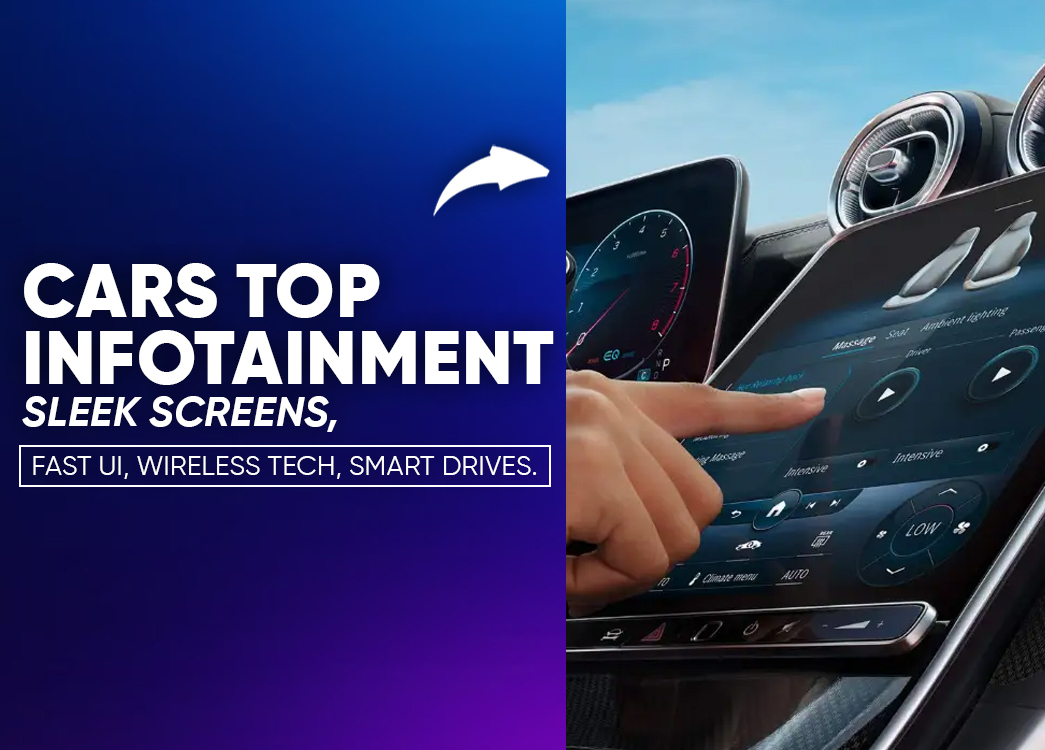
By creckk On 25-08-2025 at 9:03 am
Faraday Future FX Super One: Reinventing the Minivan with AI, EV Power & Vision
Retro-Future Faraday Minivan! Cruising into Tomorrow
The electric vehicle journey began in the 1800s, with pioneers laying a foundation that would be nearly forgotten when Henry Ford’s Model T hit mass production in 1908. The early EVs faded by about 1935, their fate sealed by cheap petrol and iconic combustion engines. Yet, as concerns over fossil fuels and emissions grew, interest in EVs spectacularly resurged and today, we’re seeing the fruits of that vision come alive.

Remembering the Genius Behind the Charge
As we pivot toward a future of electric mobility, we honor the remarkable scientist Michael Faraday (22 Sep 1791 – 25 Aug 1867). His discovery of electromagnetic induction and his invention of the electric motor and generator unleashed the power to build and propel modern technology. It’s his genius that still powers our world and now, our roads.
Faraday Future’s Grand Return: The FX Super One MPV
In a dramatic unveiling in Los Angeles, Faraday Future launched its latest creation under the new sub-brand Faraday X: the FX Super One, a luxury all-electric MPV what many would simply call a “minivan”. Designed to challenge big-name luxury SUVs like the Cadillac Escalade, the FX Super One aims to be a bold statement in premium EV mobility.
Specs and Sensations: Where Innovation Meets Ambition
Though still scant on hard specs, Faraday Future highlighted several intriguing features:
- Flexible seating: 4-seat “GOAT Edition”, 6-seat, and 7-seat configurations
- The revolutionary “F.A.C.E.” (Front AI Communication Ecosystem): a LED-based front display able to show animations, emojis, or messages an expressive, AI-enabled grille
- Luxurious amenities: zero-gravity captain’s chairs, slide-out fridge, multi-row entertainment screens, and advanced driver-assistance via LiDAR and sensors
Faraday’s bold promise is to deliver both luxury and performance, but many specs range, power, pricing remain to be disclosed . Meanwhile, pre-orders reportedly exceed 10,000, though skepticism lingers due to the company’s track record of delivery delays and low output only 16 FF 91 SUVs have been delivered to date.
Treading the Fine Line Between Vision and Vaporware
Faraday Future has spent billions on development with little production to show. The unveiling of the FX Super One brought high drama, influencer buzz, and futuristic hype but also raised questions. Many observers called the presentation confusing or overblown, noting the vehicle may simply be a rebadged Chinese MPV, and warning that the "AI" language can sound more marketing than meaningful innovation .
With production slated to begin in late 2025 and sales expected by 2026, Faraday is aiming to prove that this minivan is more than just flash it could be the real deal. But until the FX Super One hits roads and delivers real-world value, the jury remains out.
Powered by Faraday’s Legacy

From the early electric experiments of the 19th century to the execution of modern EV engineering, one constant remains: it all began with Michael Faraday’s vision. His discoveries enabled the electric motors and generators that make today’s futuristic vehicles possible.
Faraday Future’s FX Super One: The Retro-Future Minivan That Redefines Mobility
Electric vehicles (EVs) are not new. In fact, they were first invented in the 1800s, long before petrol-powered cars became mainstream. But when Henry Ford introduced the Model T in 1908, affordable and mass-produced gasoline cars dominated the market. By 1935, EVs had virtually disappeared until the world realized fossil fuel is a finite resource and emissions from petrol engines harm the environment. This sparked a revival of electric mobility, setting the stage for today’s EV revolution.
Fast forward to 2025, and Faraday Future is once again making headlines. Known for its bold promises and futuristic designs, the company has now revealed its latest model the FX Super One, an all-electric minivan, or as Faraday calls it, a “multi-purpose vehicle (MPV).”
A Journey Through Faraday’s History
1821 – Michael Faraday creates the first electromagnet, laying the foundation for motors and generators.
2014 – Jia Yueting founds Faraday Future in Los Angeles.
2015 – Announces $1 billion factory plan, selects North Las Vegas site, and showcases vision at LA Auto Show.
2016 – Begins Nevada construction, unveils FF ZERO1 at CES, gains self-driving car testing approval, explores Vallejo site, and reveals FF 91 prototype.
2017 – Drops Las Vegas project, leases Hanford facility, and unveils FF 91 at CES.
2018 – Secures $1.5B funding, Evergrande invests $854M, but faces layoffs and financial crisis.
2019 – Announces China JV with The9, Jia Yueting files bankruptcy and steps down as CEO.
2021 – Goes public via SPAC merger, listed on Nasdaq (FFIE).
2022 – Faces SEC subpoena, CEO Carsten Breitfeld removed, Xuefeng Chen appointed.
2023 – Begins FF 91 Futurist production in Hanford, with limited deliveries.
2024 – Faces eviction over unpaid rent, targeted in meme stock squeeze, secures $60M, and UAE investment deal.
2025 – Reports just 16 deliveries in total, pivots to rebadged Chinese vans, and launches FX Super One based on Wey Gaoshan.
Meet the FX Super One
Unveiled in Los Angeles, the FX Super One marks Faraday’s bold new step into the MPV (minivan) space. Unlike the FF91 crossover once hailed as the future of EVs but limited to just 16 deliveries the FX Super One aims to broaden appeal and accessibility.
The vehicle will launch as a Battery Electric Vehicle (BEV) with all-wheel drive powered by motors on each axle. Later versions will feature a range-extender hybrid system that can also directly power the wheels for added acceleration.
Key Specifications
- 130-inch wheelbase
- 51.2-inch cabin height
- 39.4-inch third-row legroom
- Flat floor for spacious comfort
- Lidar mounted above the windshield
- Level 2 autonomy only
No official driving range was revealed, though executives hinted it will exceed 200 miles. Pricing will vary between $60,000 and $90,000 depending on trim levels.
Seating Options
The FX Super One will offer multiple seating configurations:
- Seven seats – standard family setup
- Six seats – with more comfort and space
- Four-seat “GOAT Edition” – designed for entertainers, athletes, and executives, positioned as the most premium trim
The Super EAI FACE: A Thousand Faces for a Thousand Cars
One of the standout features is the Super EAI FACE, a front LED display that replaces the traditional grille. It can display animations, symbols, or even movies turning the car into a moving canvas.
Faraday describes this system as part of its Front AI Communication Ecosystem, claiming it allows the car to perceive, express emotions, and connect with the world. At launch, it introduced itself with the words: “Hi, I am Super One. I have the ability to think, reason, and eventually to express myself… You will love me.”
The FACE also includes AI-driven personalization, adapting to its owner and enhancing human-machine interaction. Whether that feels visionary or unsettling depends on your perspective.
Inside the FX Super One
The interior is futuristic, with three large dashboard screens: one for instruments, one for infotainment, and one for passenger entertainment. Though specs weren’t detailed, they appear similar to laptop-sized displays.
During the reveal, the FACE even displayed a QR code that allowed attendees to place orders on the spot. Founder Jia Yueting himself scanned the code and ordered one of his own vehicles joining what Faraday claims are over 10,000 pre-orders.
Production and Challenges
Faraday says production will begin in its 1.1-million-square-foot Hanford facility by early next year. However, most parts including batteries, motors, and body panels are being sourced from China.
That reliance on overseas suppliers means that only around 100 units may be produced in the first year. Higher volumes would require Tier 1 suppliers to establish themselves near Hanford, which has yet to happen.
It’s worth noting that despite spending $3.5 billion since inception, Faraday has only delivered 16 cars. For the FX Super One, the company’s future reputation hinges on whether this time, it can scale production effectively.
FAQs About the Faraday Future FX Super One
Q: What is the FX Super One?
A: An all-electric multi-purpose vehicle (MPV) from Faraday Future, also available later with a range-extender hybrid drivetrain.
Q: What are the seating options?
A: Available in 7-, 6-, and 4-seat configurations. The 4-seat GOAT Edition is the luxury version for high-profile buyers.
Q: How much will it cost?
A: Expected pricing ranges from $60,000 to $90,000 depending on trim levels.
Q: How far can it drive on a charge?
A: Official range is not confirmed, but Faraday says it will exceed 200 miles.
Q: What makes it unique?
A: The Super EAI FACE LED display, AI integration, Level 2 autonomy, and futuristic cabin with three dashboard screens.
Q: When will production begin?
A: Production is planned to start next year at Hanford, California, though initial numbers may be as low as 100 units.
Q: What happened to the FF91?
A: The FF91 was an ambitious crossover EV but faced production and pricing challenges. Only 16 were ever delivered, making the FX Super One the company’s second major attempt at scaling EV production.
Final Thoughts
Faraday Future’s FX Super One represents more than just a new minivan it symbolizes the company’s persistence in redefining mobility despite financial and operational struggles. Whether it will succeed where the FF91 stumbled depends on execution, supplier support, and real consumer adoption. But one thing is clear: Faraday’s futuristic vision, infused with AI, bold design, and electrification, keeps the conversation alive about what the next era of transportation could look like.
Related posts









